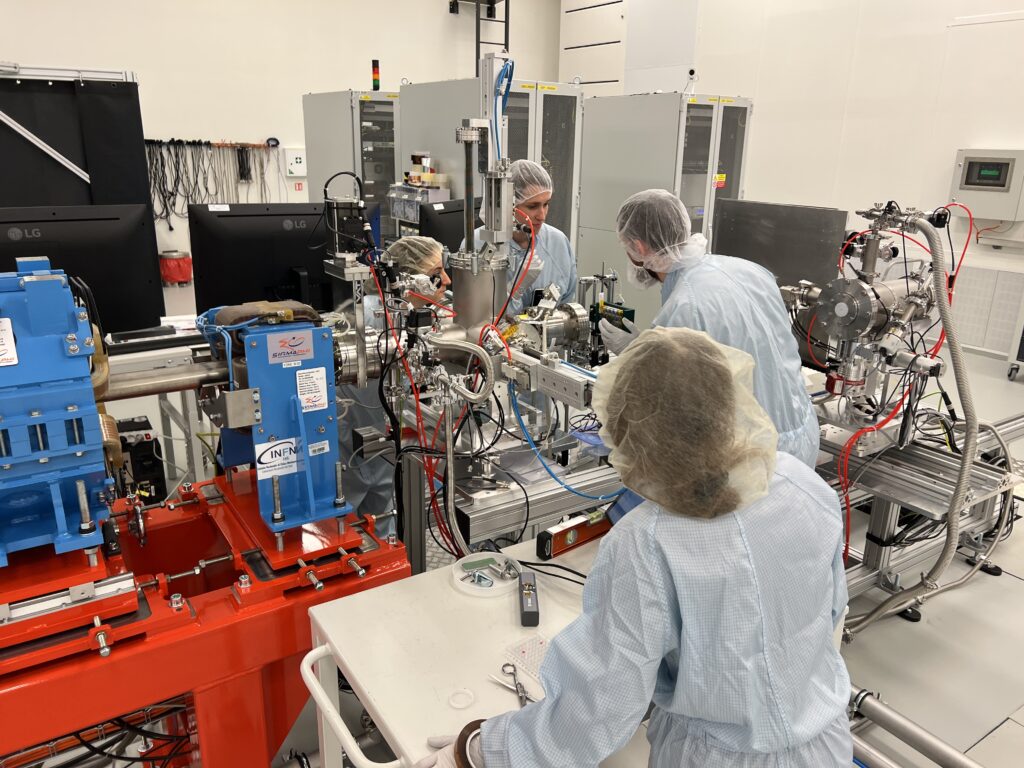
The Extreme Light Infrastructure (ELI) is a state-of-the-art facility providing international users with access to unique laser-driven particle beams for multidisciplinary research, including advanced radiobiology studies. These particle beams provide unparalleled tools for probing biological systems with exceptional temporal and spatial precision. Researchers are using these sources to perform experiments bridging the gap between ultrafast laser physics, radiation biology and cancer research.
A recent article published in the European Physical Journal Plus outlines how ELI's ultrafast, high-intensity laser systems are paving the way for new paradigms in radiotherapy which have the potential to revolutionise the landscape of radiation-based cancer treatment.
ELI's advanced laser systems enable the generation of high repetition rate (1 Hz–1kHz) secondary sources, including protons, ions, electrons, and neutrons, with energies from a few MeV to several hundred MeV, over extremely compact (sub-millimetre to millimetre-scale) acceleration lengths. The unique physical characteristics – ultrashort pulse durations and exceptionally high dose rates micron-scale beam structures, and unprecedented energy ranges. Such qualities allow researchers to explore biological responses to radiation under conditions previously unattainable.

“Our roadmap provides a tangible framework for integrating fundamental research with translational medicine,” explains Prof. Dr. Katalin Hideghéty, Head of the Biomedical Applications Group at ELI ALPS. “By exploring novel modalities such as ultrahigh dose rates microbeam radiotherapy, very-high-energy electron beams, and laser-driven neutron sources, we aim to uncover biological mechanisms that may translate into safer and more effective treatment strategies.”
The roadmap emphasises the importance of preclinical research, employing both in vitro and in vivo models to systematically explore how different beam qualities – such as spatial fractionation, particle type, and energy range – affect living systems. Recent experiments already conducted at ELI have successfully irradiated zebrafish embryos and cultured human cells using ultrashort pulsed particle beams. These studies reveal distinct biological responses that could offer advantages over conventional accelerator technologies, such as better preservation of healthy tissue or more targeted delivery of energy to tumors.
The use of ultrashort, high-intensity beams also opens the door to exploring the so-called FLASH effect for various particle species (electrons, protons, neutrons), a phenomenon where tissue-sparing benefits are observed at ultra-high dose rates. This method may offer more personalised, effective cancer treatments. Furthermore, the ability to generate arrays of microscopic radiation beams could support the development of microbeam radiotherapy, where alternating irradiated and spared tissue regions lead to remarkable tissue-sparing effects. Similarly, very high-energy electron beams (VHEE) may enable the treatment of deep-seated tumours.
“ELI is uniquely positioned to lead this interdisciplinary research because the ELI facilities offer complementary sources combining precision, intensity, and ultrashort temporal features in a way that can directly accelerate clinical applications and scientific discoveries,” says Daniele Margarone, ELI Beamlines Science Director. “This roadmap marks a step forward in connecting high-power laser science with a perspective to real-world clinical applications.”
Overcoming technical challenges such as beam stability, energy scaling, and high-repetition-rate operation will be essential. Addressing these will require collaboration across physics, biology, and clinical sciences. ELI aims to serve as a hub for coordinated international efforts to meet these challenges head-on.
ELI is committed to pushing scientific boundaries, fostering strategic partnerships, and ultimately contributing meaningful advancements to global health. The ongoing journey from extreme laser physics to impactful cancer therapies illustrates the transformative power of interdisciplinary science. With its open-access model and multidisciplinary approach, ELI is uniquely positioned to become a catalyst for next-generation, laser-driven cancer therapies.







